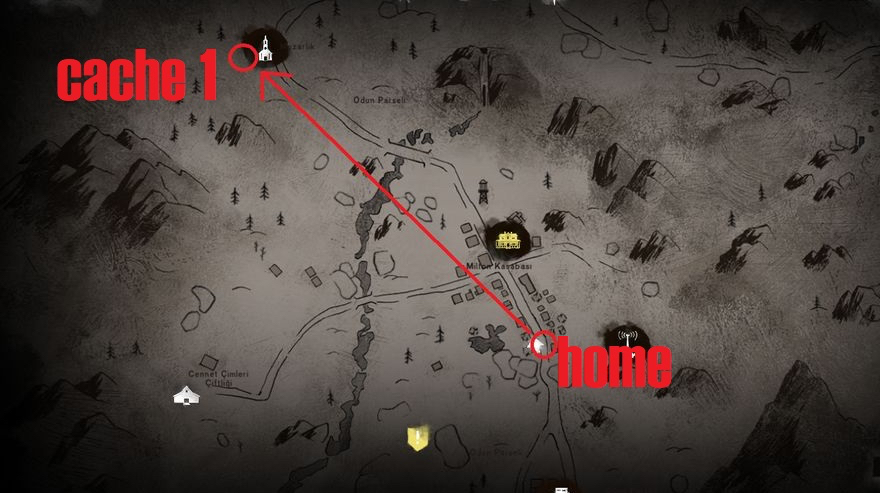Why might it be a good idea to stow a cache of emergency supplies behind a your local convenience store?

A cache is a hidden storage container (or hollow space) used to secure supplies for retrieval at a later time. This could be a go-bag stationed a block from your apartment behind a few bricks in a wall. Consider the idea of an unexpected egress after returning home and finding you’ve been compromised. Entering your apartment is unsafe but you need your passport, spare cash, or a gun. Your cache can be accessed and aid in your escape. Yes, this is a scenario more fit for an undercover operative but the concept of a cache is applicable to all. Think outside the box and I’m sure you’ll find some situations where having backup stored goods could be a life saver. Let’s focus on surviving a SHTF or Life Altering Event (LAE).
WHY CACHES?
The use of cache(s) for the purpose of survival after an LAE, would be to have supplies or useful items stored for later use. Not only will it take weight off of your load but it will also leave crucial supplies in strategic places. If disaster occurs there’s a good chance you may not be home, near your bugout gear, or even close to your vehicle. Caches are for these less than ideal scenarios. They provide a means to hide necessary supplies for shelter building, sustenances, fire making, self defense and more.
Caches are meant to be hidden so that only you (or members of your ICERS plan) have access to them. A cache can serve many purposes as outlined below.
????Resupply Point – Keeping items nearby your homestead of Bug Out Location (BOL) is helpful during all types of emergencies. In the event power and utilities are lost and your readily accessible supplies are depleted, a resupply point will be able to aid in your sustainment. A resupply point’s focus is on items such as ammo, water, food, fuel, power sources. Keep a log of expiration dates and make a schedule of when you will cycle supplies out and into daily use.
????Bugout Gear Stash – If an egress must be made without being to access your primary bugout bag or other emergency loadouts, this stash can serve as a retrieval point to collect necessary gear for a bugout.
????Expedited Foot Egress – There may be times when a foot escape from an area is more important than having a bag full of gear dragging you down. Carrying a Get Home Bag (GHB) or less is acceptable in order to keep your weight down and travel by foot as long as you have a Bugout Gear Stash.
????Contraband Cache – When SHTF governmental forces, local militias, or foreign actors may enact strict laws, bans, taxes, and forced redistribution of supplies. Supplies at your homestead or BOL could be subject to confiscation. Consider storing ammo, guns, alcohol, shelf stable food stuffs, comms gear, etc.
????Backup Supplies – Much like a contraband cache’s purpose, having backup supplies is crucial in the event marauders, gangs, or armed groups attempt to steal your stocks.
It is important to know where your cache(s) are and have an offline or paper (map) plan of where they are so that you are able to find and access them when you need them. Let’s be realistic, we are not always going to have that special map with us but we’ll most likely have our phone (yes, your phone can be one of the greatest SHTF tools, don’t believe me, see our other guide). Store an offline map with waypoints onto your phone (make sure your phone is password protected.)
This article was originally written by the Grayman Briefing. Stay in the know, sign up for Intel and Situational Awareness alerts pushed to your phone on emerging threats and preparedness warnings. Click HERE to subscribe to the Grayman Briefing.
